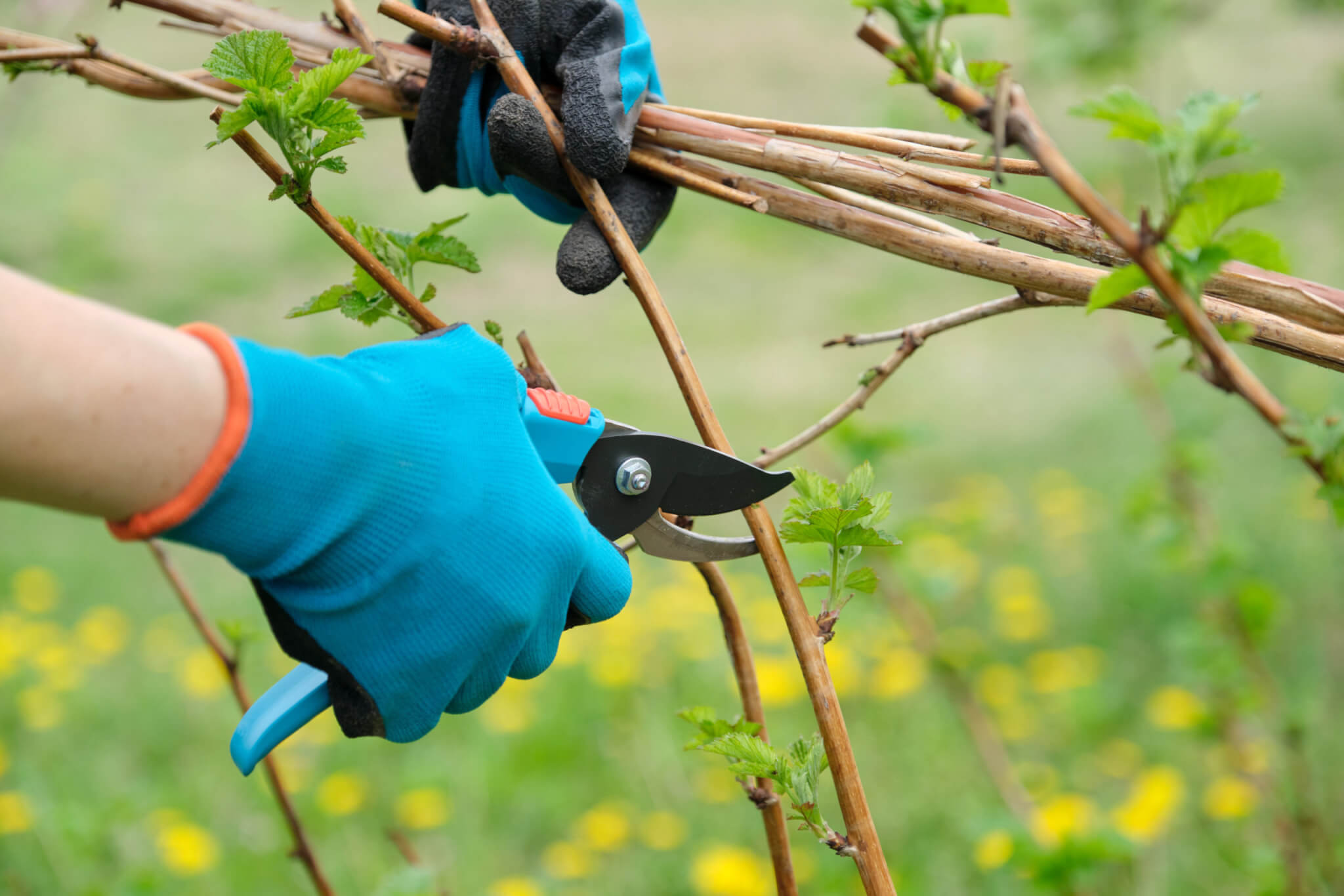
Rejuvenation Pruning: Pruning Plants, Shrubs & More
Throughout the winter and towards the beginning of spring, plants and shrubs will begin to sprout and run rampant. One thing that is crucial to do before the spring season, is to perform Rejuvenation Pruning on your plants and shrubs. And what is rejuvenation pruning you might ask? Why should it be done?
Rejuvenation pruning is a process that involves cutting a shrub down just above the ground in order to promote the best growing habits. After this process, the right shrub will quickly shoot up new stems. However, not all shrubs should be rejuvenation pruned. Think about it this way, did your plants produce very few leaves during the season? Are your branches and stems browning? Or have your shrubs become a crowded jungle of stems and twigs? This becomes an issue that even basic trimming won’t solve.
Through this guide, we will run through different types of pruning strategies, which shrubs can tolerate rejuvenation pruning, what to expect in the process, tips and tricks, and much more. This will make it easier to care for your plants in your commercial or residential properties.
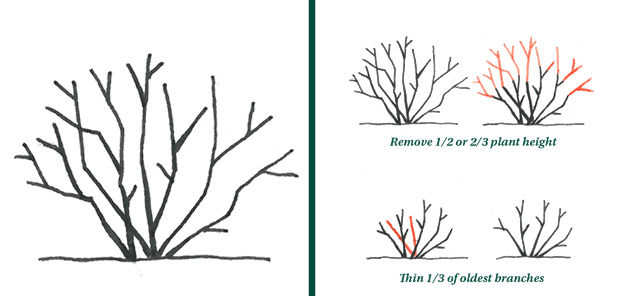
What Is Rejuvenation Pruning?
Let’s cut right to the chase, rejuvenation pruning is the removal or the reduction of old branches, limbs, and stems. This allows the plant to reset itself; allowing for new healthy branches to sprout. In many cases, this can be used in a situation where the entire shrub must go. Yes, that’s right, the whole shrub. Where the cutoff point is left with the plant being at 6” to 12” inches off of the ground. You may run into situations where the shrub is pruned to a certain size, year after year, to maintain its structure and size. This process is based more on the long-term care plan for your plants and shrubs to maintain their health and size.
Why Rejuvenate?
After shrubs grow naturally for a few years, shrubs can start to look misshapen or crowded. When this happens, there is a lot of unproductive wood. And unproductive wood does not flower or have a lot of leaves. When you cut a shrub back to the ground it will reset, resulting in a more youthful plant that will flower more and can be thinned regularly for upkeep. When utilizing rejuvenation pruning in Denver, more sunlight is provided throughout the shrub, promoting a more youthful habit. Thinning dead and diseased branches helps air circulation which mitigates certain diseases like leaf spot.
What Is Gradual Rejuvenation?
Rather than pruning an entire shrub all at once, gradual rejuvenation allows you to constantly maintain the health of your plants and shrubs. At most, reducing the size of the plant by a third of its size. Depending on climate zones, the timing of the pruning can vary.
Following the ⅓ Rule of Pruning, will allow for efficient management for your bundles of stems and plants:
- Step 1: Every year you must prune one-third of the shrub. Most of the disordered bunch will accrue in the winter/early spring.
- Step 2: This process will be done by the third year, completing the pruning of the final third of the plant.
This process makes it easy to maintain and properly manage the size and thinning of shrubs and plants. Giving you the ease of access to carry out any new growth or pruning jobs as the seasons roll through.
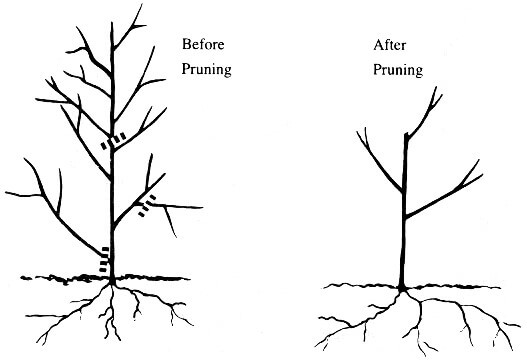
What Is Hard Pruning?
Compared to gradual pruning, hard pruning requires a more drastic approach. Essentially, cutting the limbs down to 6-12 inches off the ground. Rather than continuously cutting the stems on an annual basis, the stems are required to grow back fully from their cut-points before you start to determine the shape and size of the plant.
This process is typically performed nearing the end of winter to early spring. It is also wise to keep up with your climate zone, as that can be a factor when scheduling the pruning. One key piece to pruning is to identify if the shrub or plant can be hard pruned; not all plants handle the pruning process the same.
When looking at shrubs like Evergreens or certain flower shrubs, it’s important to understand that these have specific techniques to be pruned. Plant species like the Honeysuckle or the Dogwood can be hard pruned, but the blooming process can vary from plant to plant.
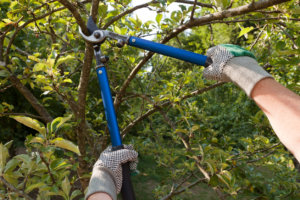
Difference Between Trimming and Pruning
Trimming-Pruning it’s all the same right? No.
Trimming: By definition, trimming is the removal of small pieces of an outer layer, in this case, we are referring to shrubs, bushes, plants, etc.
Just imagine walking outside of your doorstep, seeing your neighbor doing their spring cleaning and trimming their shrubs into spheres, or giving the shrubs a lineup with the electric hedge trimmer.
There is nothing wrong with refining your shrubs and plants, but there are other treatments to promote growth. If there are damaged areas that are not tended, this will not allow food or proper growth to occur within the shrub. A shrub in these conditions can gradually decline over its lifetime.
Pruning: What does it mean to prune? Essentially, it is the removal of dead, unhealthy, or overgrown branches and stems. Allowing new life to uproot and improve the plant’s health.
Specifically making cuts in areas that will help promote bud growth and overall plant health. Target specific areas like damaged limbs or infected areas that require treatment. Pruning gives you a pathway to manage your plants by natural shape, size and keeping a better eye on the plant’s internal health.
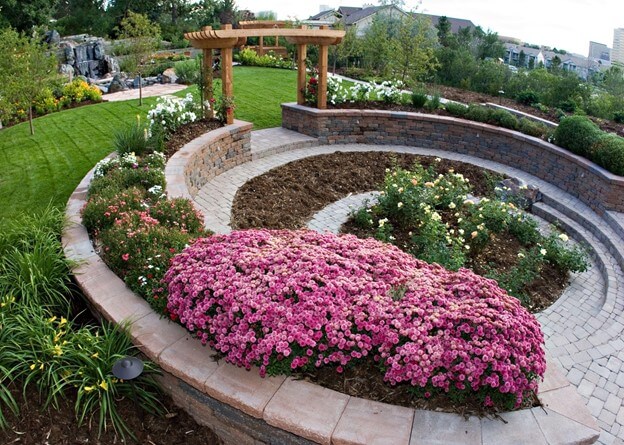
When Is Rejuvenation Pruning Needed?
The time to rejuvenation prune is late winter or early spring before flowering starts. You can also rejuvenate a shrub right after bloom to maximize flowering potential for the next season. This process is done by cutting the shrub close to the ground, and regrowth from the roots is a much more compact, and youthful plant with maximum growth and bloom. Typically, rejuvenation pruning is needed when a plant becomes overgrown, health decline is visible (begins to brown or stop flowering). This is a major occurrence in shrubs that have not had proper pruning care over the years, multi-stemmed species, or fast-growing plants. When the rejuvenation pruning process is done, this gives plants and shrubs the opportunity for revival. You will see more color and life in your plants, more flowers will blossom, and you will notice quicker growth overall.
What Time of Year Should It Be Done?
The best time to perform rejuvenation pruning services is in late winter or early spring.
Depending on the weather conditions in your area, it’s best to wait until the colder weather has dissipated. With the weather in Colorado being so unpredictable, the best recommended times would be late February to early March.
How Often Should It Be Done?
Before you begin to prune your plants, here’s a couple of things to note:
The process itself is not performed too often; typically performed every three to five years.
- Plants can get stressed when the stems and leaves are trimmed too often
- Leaving the risk of becoming weak
- Becoming prone to pest and disease infection
You can always keep an eye out when your plant species begin to look overgrown, become mangled or stop flowering. Just remember, timing in this process is key. Prioritizing what to prune, when to prune, how to prune are things that can help promote a healthy life for your plants.
What to Expect/What Happens After
After you’ve cleaned up the trash, and finished up all of your pruning, it becomes time to keep your plants healthy and well. One of the things you can look out for is the environmental conditions of your plant. Testing the soil, ensuring that there are no deficiencies, providing quality nutrients and fertilizer for your plants, and more importantly providing water for your rejuvenated plants.
One thing to be aware of is that your plants will not flower the year that they have been pruned. Give it some time, the year after the pruning is done you will see a plethora of flowers blooming.
As time passes, you can continuously prune your newly grown plants to prevent any overcrowding. This makes it easier to prepare your plants for winter damage and prune.
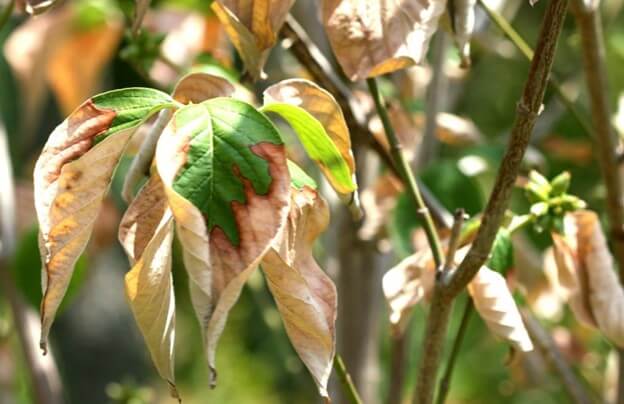
Which Shrubs Benefit from Rejuvenation Pruning?
One thing that you might want to take into consideration is what kind of shrubs respond the best to rejuvenation pruning. Multi-stemmed, twiggy shrubs are the best for rejuvenation pruning. For example, if a shrub has only one main stem, it is not healthy to rejuvenation prune. In order for this process to work well, the shrubs need to be in overall good health first. It is not wise to prune a shrub that is damaged due to drought. In most cases, it is better to let the shrubs heal before pruning to make sure they survive. The pruning process works best for plants and shrubs like:
- Red-twig dogwood
- Viburnum
- Spirea
- Flowering quince
- Forsythia
- Oakleaf hydrangea
- Lilac
- Honeysuckle
Rejuvenation pruning is important to perform even when your plants and shrubs are looking healthy. If you have trouble identifying when is the right time to execute a pruning session, there are a few visible characteristics to help figure that out.
Keep an eye out for:
- Overgrown or crowded shrub with dead stems and limbs
- Unmanageable structure or form loss
- The shrub has minimal to no flowering

Plants and Shrubs that Should Not Be Pruned
Hard pruning is very stressful on different plant species. Do not attempt pruning rejuvenation techniques on the following:
- Plants and Shrubs in Poor Condition
- Damaged shrubs that aren’t healthy, injured through pest and insect damage, or water stress.
- Evergreen Shrubs
- There are specific techniques for these shrub types. Improper pruning will lead to the shrub not growing back. This will eventually lead to the entire removal of the shrub itself.
- Woody and Overgrown Shrubs
- These can be identified when new leaves and growth spurts appear at the ends of a stem. Shrubs like these will need a gradual pruning type approach so that the plant grows properly out properly. Otherwise, the plant could be off worse.
- Shrubs with a single main stem
- The main stem should not be cut entirely or else that shrub is a goner. These shrubs will be like trees with branches up above, so different pruning techniques will apply.
What Else You Should Know
The experience and the education that you take away from rejuvenation pruning can go a long way. Similar to tree care, pruning care in all plant species is important. Learning the proper methods of caring for a plant, how to extend the lifespan of a plant, and even to find out that you made a difference in the life of a shrub. Now it’s all in your hands to go try out rejuvenation pruning and see what kind of a difference you can make!
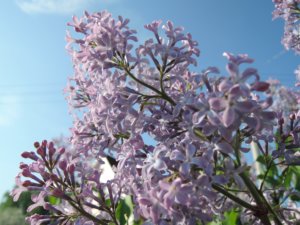
When it comes down to the health of your plants, keeping them disease-free and well maintained can become a difficult task. At Environmental Designs, our Plant Health Care experts are ready to help maintain, design, and keep your shrubs and plants healthy. We can help ensure your shrubs to retain shape, size, and disease control over time. If you are ready to get rolling on your next landscape project, contact us today for a free quote.

